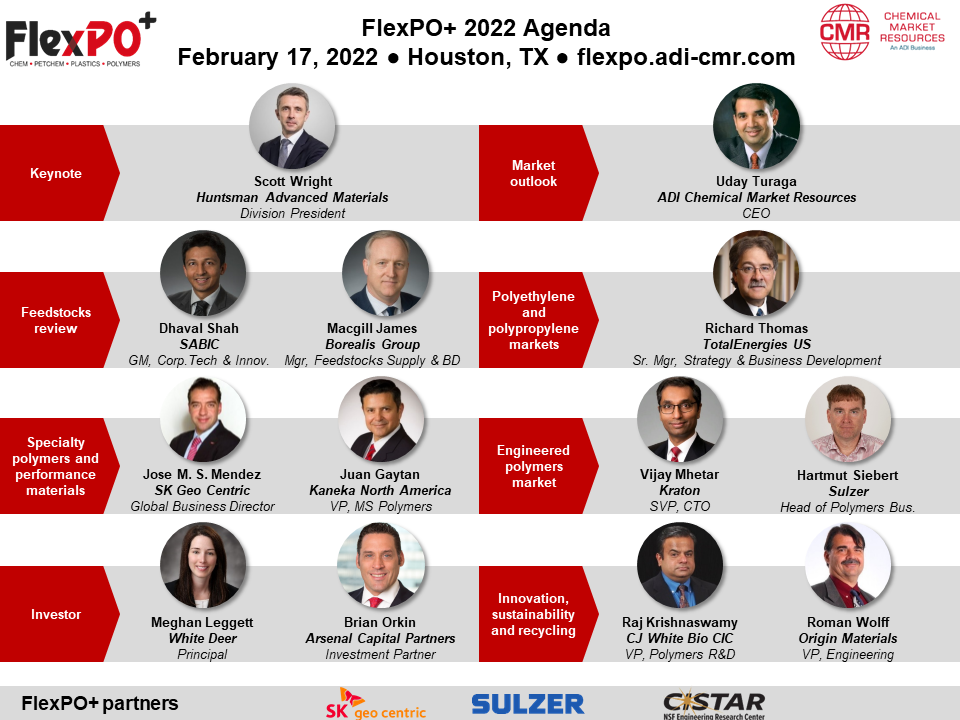
Powered by rising support for decarbonization, hydrogen is being positioned as a key pillar to the energy transition. Through 2021, more than 200 hydrogen projects were announced, 30 countries had released their hydrogen roadmaps, and governments worldwide announced billions of dollars in capital spending towards hydrogen infrastructure. This momentum is expected to continue in 2022 with demand generation and cost reductions being the focus across the hydrogen value chain.

1. Hydrogen demand will grow at 4.5% through 2025 with Europe growing the fastest
Global hydrogen demand is expected to grow at 4.5% annually depending on decarbonization policies from ~74 million tons per year (MMTPA) to ~77 MMTPA in 2022. Demand will be dominated by Asia Pacific, Europe, and North America with Europe growing the fastest followed by Asia-Pacific and North America. Transportation use of hydrogen, driven by decarbonization goals and government incentives, will be the fastest growing sector followed by industrials including methanol and ammonia manufacturing.
2. Europe, North America, and some Asian countries will be early adopters of hydrogen
Government and policy support stems from a global shift in sentiment for decarbonization with ~75 countries announcing their net-zero ambitions and ~30 countries that have created hydrogen strategies on a national level. Europe leads globally in the number of announced hydrogen projects, with Australia, Japan, Korea, China, and the U.S. following as additional hubs. In expected major demand centers like Korea, Japan and Europe, the focus will be on industrial usage and transport application projects. While Japan and Korea are strong in road transport applications, green ammonia, liquid hydrogen (LH2), and liquified organic hydrogen carriers (LOHC) projects, Europe will champion multiple integrated hydrogen economy projects.
3. Falling production and distribution costs will commercialize mobility applications in the next few years
Commercial mobility applications become viable at hydrogen costs of $3.0 per kg whereas passenger vehicles become viable at ~$2.0 per kg. Current green hydrogen production costs are still two to three times higher than the target costs with the cost of renewable hydrogen production falling drastically by up to 60% in the past few years. This can be attributed to the falling costs of renewable electricity generation, scaling up of electrolyzer manufacturing, and development of lower-cost carbon storage facilities. All these parameters will drive the costs further down to $1.0 to $1.50 per kg by 2030 which will be on par to current large-scale gray hydrogen production methods. Lower production and distribution costs will both contribute to lowered delivered hydrogen costs.
4. More than $300 billion announced in hydrogen investments through 2030
Investments in hydrogen are gathering momentum with more than 300 projects being announced globally totaling ~$300 billion out of which ~$80 billion are mature investments already in planning or development phases. Of these, there are 17 giga-scale production projects with the biggest in Europe, Middle East, and Chile. There are 53 transportation-related and 23 infrastructure related projects covering hydrogen distribution, storage, and conversion. A key focus in 2022 will be assessing how these projects are advanced and commercialized.
5. Demand for small-volume applications will grow as part of decarbonization strategies
Hydrogen applications are increasingly growing for small-volume applications such as the steel industry, transportation, glass manufacturing, semiconductors, chemicals, and space heating for buildings. Demand for hydrogen in steel and mobility will grow rapidly according to ADI Analytics research through 2030 whereas hydrogen demand in glass, food, and space industry will grow quickly as well. Hydrogen will increasingly be used to create renewable synthetic fuels to decarbonize commercial aviation and freight shipping, which are harder to decarbonize using pure hydrogen and fuel cells. Developing these small-volume applications quickly will be a focus in 2022 to drive demand in the near term.
6. Capital costs of electrolyzers will fall sharply by ~50% through 2030
Interest in hydrogen is driving investments in electrolyzers, and ~28 GW of additional capacity is expected to come online with ~200 projects being announced or planned over the next ten years. Alkaline and PEM electrolysis will dominate the market, and solid oxide technology development is advancing rapidly. Improving performance and reducing the costs of electrolysis technologies are the focus of intense R&D efforts globally. Current capex for alkaline electrolyzers range from $600 to $1,400 per kilowatt for complete electrolyzer systems which is expected to fall ~50% by 2030. Most of these cuts will be led by diaphragm and electrode packages and power supply. For PEM electrolyzers, current capex is ~$1,000 to $1,300 per kilowatt for the entire electrolyzer system but costs are expected to fall significantly by 50% by 2030. Bipolar plated and power supply contributes to the high costs but will fall the most going forward. The progress towards these cost reductions at leading electrolyzer manufacturers will be closely watched in 2022.
7. Hydrogen will find widespread adoption for commercial vehicles
Hydrogen can play a critical role in a low-carbon technology portfolio with much of its application in the transportation sector. In transportation, hydrogen-powered vehicles are commercially available now or will become available in the next five years. With production costs likely to drop with scale, allowing hydrogen to compete in segments such as smaller cars and minibuses will be more viable. We expect mass-market acceptability in the near-term for trucks, minibuses, trams, forklifts, and passenger ships. Medium or small-sized passenger vehicles will see a little penetration as most of this segment will see a stiff competition from electric vehicles with batteries. The energy efficiency of FCEVs is much lower than BEVs whereas batteries have the lowest energy density per weight, making them well suited for lighter vehicles and shorter ranges.
8. Producers will face a daunting task to utilize existing gas infrastructure to support the hydrogen economy
Hydrogen transportation via pipelines will be critical to developing the hydrogen economy. However, significant progress around technical standards and demonstrating the viability of using existing pipelines with hydrogen has to occur in 2022.
9. Shipping hydrogen can be a viable option soon
Countries such as South Korea and Japan will need shipping routes to import hydrogen for domestic needs, but the costs and technology limitations associated with shipping hydrogen need to be addressed. Transporting hydrogen as ammonia seems to be the most cost-effective solution over long distances whereas liquefaction or compressed hydrogen pathways are more preferred for shorter distances (~2,000 nautical miles). On a levelized cost of hydrogen basis, the cost associated with transporting hydrogen in the compressed form for 2,000 nautical miles is ~$1.60 per kg whereas transporting hydrogen with ammonia as liquid can cost as much as ~$2.50 per kg. Significant technological progress will, however, have to occur in 2022 towards these goals.
10. Big uncertainties around demand and adoption of choice between green hydrogen and blue vs. green hydrogen
Uncertainties in the hydrogen value chain around technical learning rates, consumer behavior, and the strategic interactions of governments, automakers and fuel providers are particularly acute. U.S regulators and industry leaders are skeptical about how to consider introducing blue or green hydrogen into the nation’s energy supply mix. Today, green hydrogen is two to three times more expensive than blue hydrogen, however, falling electrolyzer costs will reduce the gap going forward. Blue hydrogen is cheaper, and its production can more easily be ramped up to a commercial scale and can provide a bridge to an economy in which the zero-carbon green hydrogen is predominant. There needs to be a demand or market for green hydrogen that can drive the investments for green hydrogen production pathways. Developing policy frameworks in 2022 will help reduce these uncertainties.
11. Diaphragm compressors, fueling equipment, and alkaline and PEM electrolyzers will dominate the mobility infrastructure
There will be a greater need of critical equipment to build the hydrogen infrastructure such as diaphragm and piston-type compressors for the fueling stations and high-efficiency, low-cost electrolyzers for hydrogen generations. Diaphragm and piston-type compressors serve most of the compression needs in the hydrogen value chain. Fueling station operators prefer to use diaphragm compressors and other applications are predominantly dominated by recips. Alternatives for fueling compression needs such as metal hydride and electrochemical compressors are currently in early stages. For electrolyzers, alkaline and PEM electrolysis dominate the market, and solid oxide technology development is advancing rapidly. Improving performance and reducing the costs of electrolysis technologies are the focus of intense R&D efforts globally. Leading electrolyzer players are projecting cost reductions to enable hydrogen production at ~$1.50 per kg by 2025. However, modeling levelized costs of hydrogen production with realistic assumptions projects the costs to range from $2.10-$2.90 per kg at $40/MWh electricity prices. Advances in the scale and performance of these key equipment categories in 2022 will help develop hydrogen infrastructure in the future.
ADI Analytics will continue to monitor, track, and research hydrogen market. Please review and contact us to learn more about our research.
Utkarsh Gupta





















